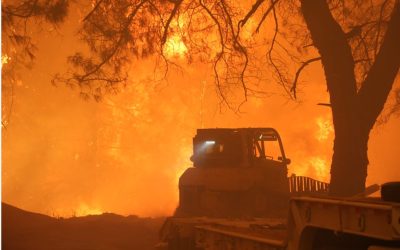RESOLUTE, Nunavut — In 26 years of chasing polar bears, Nathaniel Kalluk has never had another hunt like it.
“It was springtime, many years ago,” he begins, running a hand through hair coal black contrasted by one eyebrow white as the predator he stalks.
“We were travelling all night and in the morning we camped. We were tired and went to sleep — until we heard the dogs howling at about 4 a.m.”
Kalluk had staked his dog team downwind of his tent, the side on which bears approach. That way, any bear would have to go through the dogs first and the hunters would have plenty of warning.
But this time, when the dogs woke him, he realized the wind had shifted. When he burst from his tent, right there, “very close,” was a bear. A big one, upwards of three metres long.
The hunters scrambled. Confusion reigned.
“I couldn’t find my rifle,” admits Kalluk, a little embarrassed.
Fortunately, the group had left a cache of seal meat outside the tent. The cache was big enough to distract the bear.
“Lucky thing,” says Kalluk, with Inuit understatement.
Finally, one of the hunters found his weapon.
“I saw the bear getting ready to attack. The hunter and the bear looked at each other, and he shot it.
“That was… over-excitement.”
Kalluk, 52, leans back on a chair in his tidy kitchen and smiles at the memory of the lucky cache. But in truth, he feels a bit like that seal meat these days — chewed by forces much more powerful than he.
He fears the hunt that has been his life since 1981 has become a political pawn for southern interests that understand little of its value and importance.
Late last year, the U.S. Fish and Wildlife Service announced plans to add the bears to a list of endangered species, citing concerns climate change is melting sea ice crucial to the way bears hunt seals.
Whether the bears are currently endangered is disputed.
There are probably 25,000 of them in the circumpolar North, about 15,000 in Canada. Some populations are clearly in trouble. Some seem to show early signs of decline, some are healthy and some seem to be increasing.
But the U.S. move, which would tightly restrict the ability of American sport hunters to bring back skins and trophies from their hunt, unleashed an international blizzard of controversy.
The linking of an iconic species to one of today’s most heated political debates continues to generate comment from around the world. Newspapers in Hong Kong, Chicago, Boston, New York and London — as well as many Canadian dailies — have sounded off on the issue, which has even provided fodder for serialized comic strips.
“I don’t think it’s about polar bears,” sighs Kalluk. “I think it’s about governments.”
Kalluk’s own life is inextricably bound up with the bears.
He’s tried the south. At 15, he moved away for school for four years, finishing up in Ottawa.
“That didn’t go well,” Kalluk recalls. “Drugs and booze.
“So I quit school and came back up here, which is much better.”
Seeking a life on the land, he moved to a remote outpost camp, where he met his wife. The two now have four children and are expecting their third grandchild.
He began hunting polar bears, and soon after, started guiding for southern hunters, mostly Americans.
Kalluk runs Nanuk Outfitting and has four guides working for him. He’s already been out on two successful hunts this year and has another 18 tags.
Clients gets a 10-day hunt. They travel by dogsled, watch for bear tracks and stop periodically to scan the horizon. At night, they sleep in a cosy shelter Kalluk has rigged up on the back of a komatik, or sled, on mattresses and caribou skins, wearing traditional caribou clothing made by local women.
“There’s nothing to see but ice and bears,” he says. “It’s pure.”
Once a bear is spotted, the hunters begin a chase that can take days. When the hunters get close enough, Kalluk unleashes the dogs, who circle the bear and immobilize it.
Finally, the hunter takes his shot.
For this, each client pays US$27,000, 20 per cent of which goes to Kalluk’s American agent. The rest stays in Resolute. It goes to the guides, the women who sew the parkas and the local Co-op that provides supplies. The meat goes to anyone who wants it.
“It tastes a little like lamb,” says Kalluk, who has a tub full of polar bear haunch frozen outside his storage shed.
Kalluk understands concerns about global warming. He understands, too, why the image of a struggling polar bear makes such a powerful and persuasive image.
But he doesn’t understand why the debate he sees in the south seems so detached from the reality he sees out his front door.
And he doesn’t understand why Inuit like him should have to pay to salve someone else’s conscience.
“We’re just caught in the middle where the governments are clashing.
“I’m happy. I like life. Why do you want to stop the hunt?”


